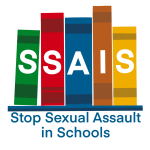 by Julie Stern, content lead for American Federation of Teacher’s Share My Lesson and eLearning platform.
by Julie Stern, content lead for American Federation of Teacher’s Share My Lesson and eLearning platform.
Last year marked an important moment for women’s rights and brought sexual harassment to the forefront of the news cycle. Time magazine’s Person of the Year was a collection of women who were honored for being “the silence breakers.” A new hashtag of #MeTooK12 emerged to shine a light on the issues facing students and staff in schools. Here at Share My Lesson, the #MeToo collection has been incredibly popular among our users.
As other issues crowd the headlines and compete for the nation’s attention, it’s important to pause and ask where we go from here. I am contemplating the following three areas and how educators can play a role in directing awareness and action.
1. Expanding the movement: Whose voices continue to be silenced? Whose stories are being overlooked?
Let us use this momentum to draw attention to working-class women and women in prison, for example, as seven prison guards in Pennsylvania are charged with ongoing and widespread abuse of female prisoners.
A recent article shows the incredible disparity when it comes to income and abuse:
“Sexual harassment isn’t just a problem in the glamorous upper echelons of Hollywood and the Media and Capitol Hill. It’s a problem at fast food restaurants, and hotels, and farms and just about every other underpaid industry across America. Make no mistake, it’s a worse problem in those places. Minority women are more likely to experience sexual harassment than white women. Women in the lowest income bracket (with household incomes of less than $7,500) are six times as likely to be sexually victimized as women in the highest income bracket (household incomes of over $75,000). Women without high school diplomas are 400 percent more likely to be assaulted than those with a bachelor’s degree.”
Identity is a complex structure, and no person is just “one thing”—we all have a gender, race, religion, nationality, etc. Where our different identities intersect is called “intersectionality,” and we can help students understand this concept with a lesson from Morningside Center for Teaching Social Responsibility.
We also can help students to understand the plight of the working class through our collection of resources in Labor Union History and Social Justice. If your students want to take action on any of these issues, you might want to check out resources in our Teaching Social Justice collection or the curriculum at Rock Your World or Speak Truth to Power.
2. Policy and practice: What rules can we change or add to bring justice and to prevent situations involving sexual harassment?
We can ask our principals and human resource officers how they’ve updated school policies in light of recent revelations of the prevalence of harassment in the workplace and in schools. Check out the incredible resources from our partner Stop Sexual Assault in Schools and see this toolkit on creating school and district policies for school safety from Futures Without Violence. You can also join our upcoming webinar on #MeToo and #MeTooK12.
3. Safety and power: What other movements have safety and power (or lack thereof) at the core of their struggles? How can we link up to increase safety and voice for our children?
The March for Our Lives and Black Lives Matter movements are two that immediately come to mind. We can encourage our communities to find common ground and collaboration in the midst of so much blaming and hyperbole. Everyone should agree that the safety of our children needs to come before profits or political gain. Let’s bring the conversation back to this every time and let people know what we are doing to ensure our children have a secure space, physically and emotionally, in which they can learn and grow.
What am I doing? Continuing to build resources for teachers that foster kindness and belonging in the classroom. What will you do? Leave a comment below. I support you!
This blog originally appeared on Share My Lesson.
